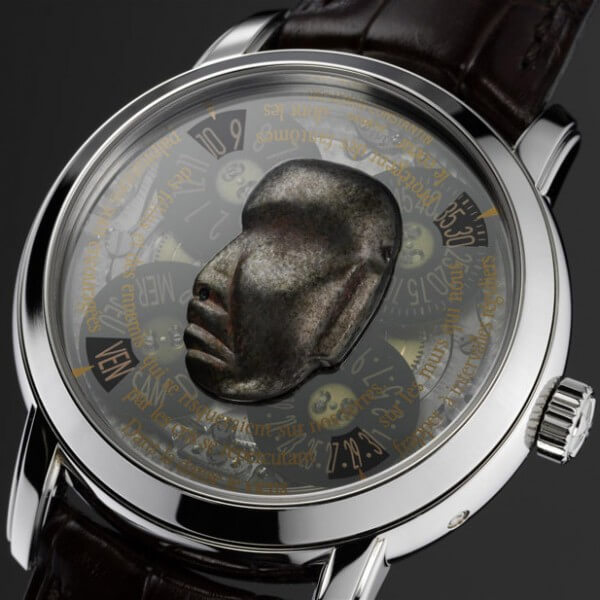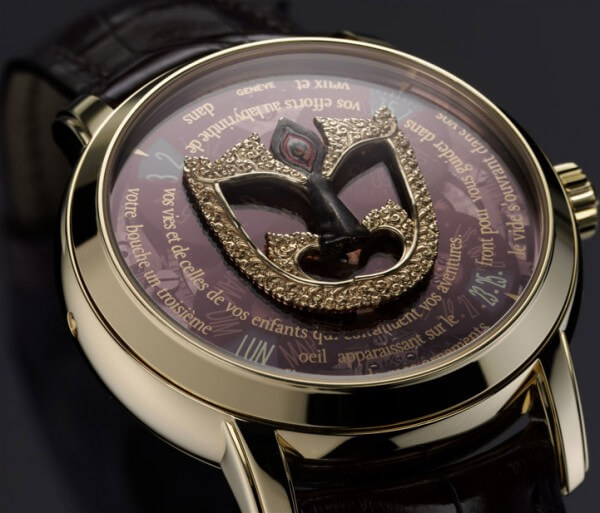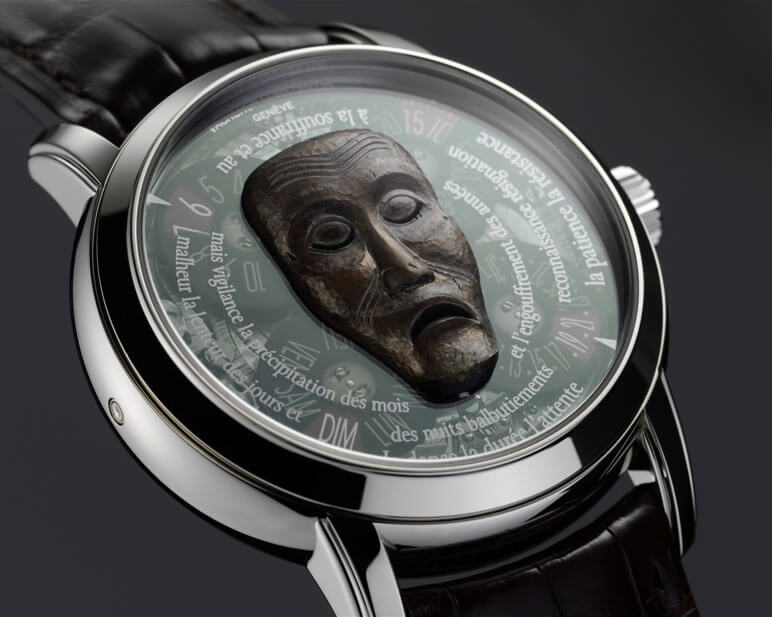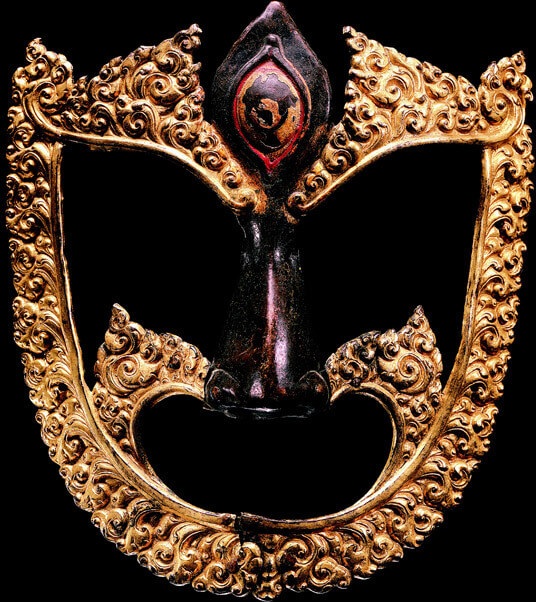Vacheron Constantin is confirmedly one of the most ancient watch manufacturers in the world. In 2005, the Geneva-based brand celebrated 250 years of uninterrupted history. To mark this point in time, the venerable House issued a strictly limited number of highly complicated timepieces that marked the limits of mechanical watchmaking. After this firework of mechanical artistry, there arose the question of how to proceed in the same vein to satisfy the high expectations aroused with the anniversary timepieces. Already during the preparations for this collection, the idea arose to combine watchmaking with fine arts. The proximity of the “Musée Barbier-Mueller” in Geneva gave rise to the idea of getting inspiration from the innumerable masks that had been collected by the Mueller family.
Early in the 20th century Joseph Mueller had already taken a strong interest in non-western arts through what he had seen during his extended travels. He became though a passionate collector of what he recognized as a form of art long before most museums. Like many European painters and sculptors of the surrealist movement he was impressed by representations of human figures, and especially masks, from Africa, Asia, Oceania and the Americas. He was able to transmit his passion to his daughter Monique and her husband Jean-Paul Barbier-Mueller. In 1977, shortly after Joseph’s death, the two opened the “Musée Barbier-Mueller” in Geneva that constantly exhibits a part of their vast collection of ethnical art, with a focus on masks.

A crucial question
Vacheron Constantin’s patron Juan-Carlos Torres and his artistic team soon developed the idea to create a series of watches whose design might incorporate a miniature representation of masks chosen from the Barbier-Mueller collection, bearing in mind that François Constantin had been a great traveller in the service of his manufacture. The question remained: would it be possible to convince Jean-Paul and Monique Barbier-Mueller?
A meeting of Juan-Carlos Torres, the artistic team of Vacheron Constantin and Jean-Paul Barbier-Mueller proved that these doubts were unjustified. The collector was soon convinced of the artistic approach of the brand and gave his consent to the project. What followed was a meticulous research into the possibilities the museum had to offer. The master engraver Olivier Vaucher was called to help finding the masks that held the greatest promises of keeping their effect even on a very small scale. With the help of Jean-Paul Barbier-Mueller, 12 masks representing the four non-European continents were chosen and it was decided to issue a set of four different watches each year, starting in 2007. Each set of four watches would be produced in a strictly limited series of 25 numbered boxes, resulting in a total of only 300 watches over the span of three years.
The artist’s challenge
To present each of the masks in the right light, it was decided to use the automatic manufacture Calibre 2460G4 which displays time and date by means of rotating discs instead of hands. This layout allows the centre of the dial to take up the masks without disturbing the functionality. Each mask is mounted on a sapphire crystal and protected by a second scratch-resistant sapphire. Encircling each mask, there is a poem by the writer Michel Butor, an intimate connoisseur of the collection. The writing is applied to the crystal by metal evaporation and can only be read if the light hits it in a certain angle.

Olivier Vaucher and his team set to work immediately. “It was a huge challenge for us” he explains, “because the material we were to use was gold, but it had to faithfully reproduce the looks of wood, stone, or anything those original masks had been made of!”. One further difficulty layed in the third dimension: “Some of the masks chosen have very marked features like a long nose etc. We had to find a way to represent that depth in a very restricted space. Just imagine: the gap between the two sapphire crystals that contains each mask measures just less than 3 millimetres!” To achieve the necessary realism, innovative 3D scanning technology was married with traditional craft. “The finished miniature masks of roughly 15 mm size (and 2,36mm thickness) looked breathtaking,” says Olivier Vaucher. “It was my wife Dominique, a painter, who gave them the finishing touch by adding the colours that would turn gold into wood, rust or stone. We are all very pleased with the result.”
The great day
In June of 2009, after three years, came the Grande Finale in the form of a special exhibition in the Metropolitan Museum of New York: “A Legacy of Collecting: African and Oceanic Art from the Barbier-Mueller Museum, Geneva”. Vacheron Constantin, who backed the exhibition as a sponsor, took the opportunity of its opening on June 2nd to unveil the third and last set of “Les Masques” and exhibited it in the company of its predecessors from the two previous years.



















